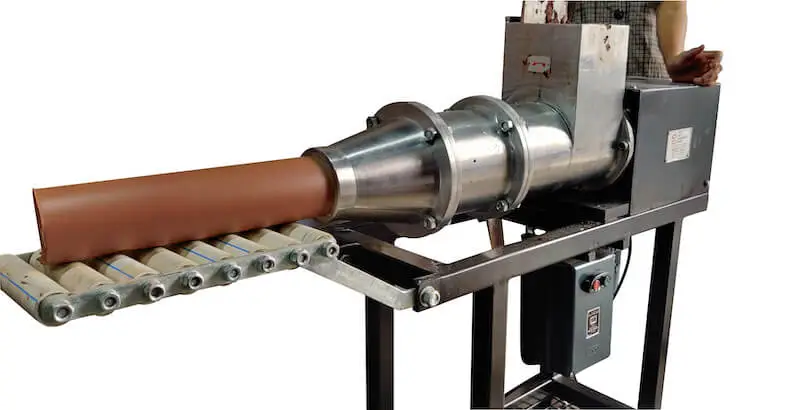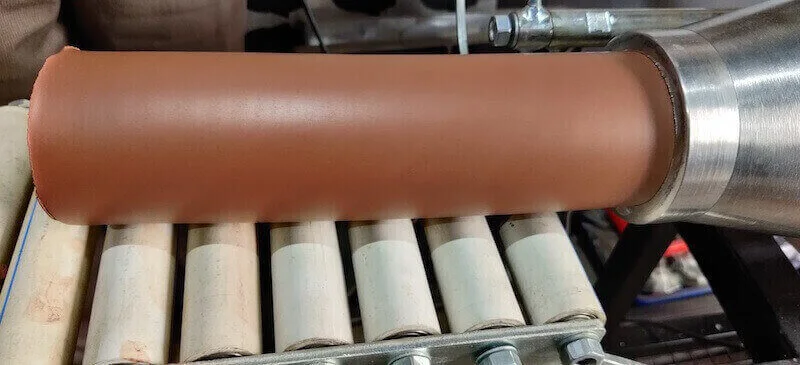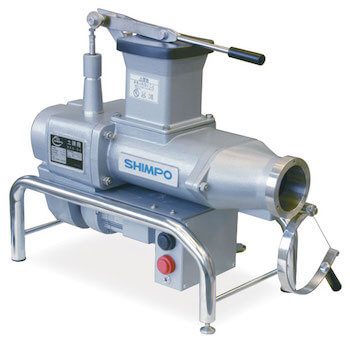Pottery is a very popular hobby, and it also requires you to have various tools, equipment, and accessories so that the job is done right. While pottery is fun, it also takes practice, and one of the essential pieces of equipment you’ll own when you’re a potter is a pug mill.
What is a Pugmill?
If pottery is your hobby, you already know that a pugmill, often called just a “pug,” is a chamber that thoroughly mixes different materials into a homogeneous mixture. When small pugs are used, they are usually used to reclaim or recycle clay and deaerate or add moisture back into the clay to get it moist again.


Pugmills are essentially mixers that can be used for several different tasks. You can even use a pug mill to pre-process clay so that it is neither too dry nor too wet for you to proceed.
Most pugmills require that you do this, so the process runs much more smoothly. Pugmills come in many sizes and can be used for pottery and specific industrial tasks, including helping the cement industry.
First Thing’s First
By now, you’re probably wondering, what is the difference between pugmills and clay mixers? Indeed, they do seem to have very similar purposes, but they are still a bit different. For instance,
- Mixers work clay thoroughly and distribute water to the clay throughout the day; this way, the clay is always at its best consistency.
- Pugmills do their job by wedging the clay, then removing the air from it; then, the clay moves through the chamber to the nozzle, where it is ready to use.
Keep in mind that, in general, a clay mixer will mix up the clay a little better because its main job is to mix your clay thoroughly. While pugmills also mix the clay, their main job is to wedge the clay.
This is because clay has to be the right consistency to go through the chamber, and you can put it through a pugmill to get it to the right consistency. With both of these devices, once the clay gets to the end of the process, it is ready to be used.
What is a Pugmill Used For?
Before we go any further, let’s look at some of the more common uses for pugmills. They include the following:
1. They Remove the Air
As you probably already know, the air in clay can be disastrous, especially for a potter. If the air pockets in your clay are too big, it is tough to center the clay. Your pot may explode if it contains too much moisture in any of the air pockets. Removal of air is one of the pug’s most important tasks.
2. It can Cause you Less Pain
Wedging clay by hand can hurt your wrists, but the best pugmills even out the moisture found in your clay so that it is more workable. For people who hate wedging by hand, this machine is a must-have for your collection.
3. Some of Them Have Vacuums
Even better, some pugmills have vacuums so the air bubbles can be easily sucked out of the clay, saving you a lot of time and worry.
4. They Make Recycling Clay Scraps Easier
All potters want to recycle and reuse their clay scraps, and pugmills make it much easier to do this. Once you get to the point where the clay needs to be wedged, you can simply put it in the pugmill instead of doing this task by hand.
What is a Pugmill in Pottery?
To better learn what a pugmill does in pottery, you must know a little about what it does in other industries.
Pugmills for pottery are powerful and reliable mixers, but naturally, industrial pugmills do far more than the ones used in ceramics. For one thing, they’re great for continuous mixing, including processes that involve abrasive aggregates.
Companies that install local roads often use a pugmill because it can produce numerous mineral mixtures for the road base and for drying sludges with reagents, landfill bentonite liners, and roller compacted concrete. They are so powerful they can produce 50–1,000 tons per hour, which is a lot but also necessary for commercial jobs.
In the U.S., many rock quarries use pugmills to add water to aggregate to create the road base, but the devices are also used in landfills to add drying agents to the mixture to dry waste sludges that need to be landfilled.
In addition, pugmills can stabilize waste dust such as bed ash, fly ash, and even dust from a cement kiln. Lately, other uses have included using pugmills to dry drilling fluids from the oil and gas industries, liquids from hydro-excavation, and even tunnel boring machines.
More About Pugmills
But let’s get back to pugmills and pottery. We’ve already learned that pugmills can recycle clay scraps and transform leftovers into workable clay. Hence, it’s easier to work with, and remove the air from the clay, so it’s easier to manipulate without hurting your hands and wrists.
The bottom line is that you need to own a pugmill if you’re a potter but hate the wedging process.
We mentioned earlier that some pugmills have vacuums that remove the air from the clay to make it easier to work with; with this capability, certain production mishaps can be avoided, including the pottery breaking down as you’re firing because there are air pockets in the clay.


But even without this feature, all pugmills can reduce the amount of air in the clay.
Keep in mind that there are also combination clay mixers/pugmills, which combine features of both machines. They can pug and mix different properties and even allow you to add bone dry scraps with water to get clay wedged and evenly mixed in the end.
You can even choose to use a recipe with dry materials, which is convenient for potters working with challenging clay bodies such as porcelain and others.
Is a Clay Mixer the Same As a Pugmill?
A Clay Mixer, in contrast to a Pugmill, actively manipulates and mixes the clay, evenly dispersing water throughout the material until it reaches the ideal, usable consistency. The Pugmill squeezes the air out of the clay and moves it through the chamber as it is wedged. After going through the nozzle, the clay is finally ready for usage.
If You Want to Purchase a Pugmill
If you wish to buy a pugmill, things to look for include:
- The capacity, mixing rate, pugging rates, and batch-mixing sizes.
- The electrical power needed to operate the device.
- Ventilation systems that control and collect the dust.
- Even the safety features.
It’s best not to rush out and get the biggest and most expensive pugmill out there, especially if this is something you’ll only use a few times a year.
However if you are looking for the best pugmill for pottery our top pick is the Nidec Shimpo Pug Mill.
Shimpo Pugmill
- Ideal for pugging and reclaiming clay. Nidec Shimpo Pug Mill has a small, portable, and sturdy construction.
- The heavy-duty aluminum body resists corrosion, clay body contamination is avoided. Superior blending and mixing is aided by twin metal mixing augers.
- Cleanup is quick and simple thanks to removable augers and plates. A safety limit switch automatically cuts power when the auger is exposed, while the dual safety system ignition key gives the operator control.
Conclusion
Pugmills are essential both for potters and for specific industrial facilities. The devices come in numerous sizes and capabilities, and their main job is to prevent you from having to wedge clay with your hands, which gets painful quickly.
While they are very similar to clay mixers, keep in mind that clay mixers do a much better job of thoroughly mixing the clay.
Nevertheless, pugmills are important devices to have around when you’re a potter, especially if you participate in this hobby regularly. In the long run, they can save you both time and money, making them a worthwhile investment.



Enter your email below to get our FREE beginner friendly tips.
By entering your email address you agree to receive emails from Potters Passion. We'll respect your privacy and you can unsubscribe at any time.

